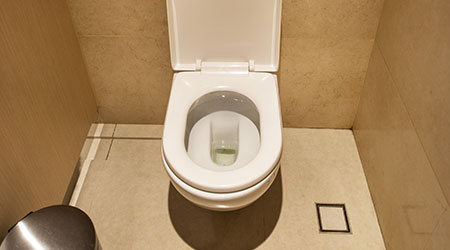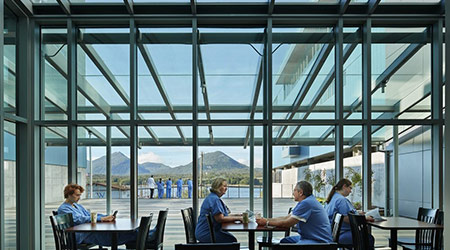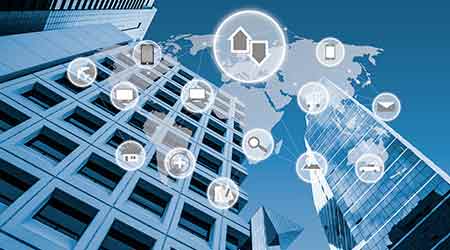
Unified BMS and Security for Smart Buildings Connected to Micro-Grids
May 7, 2018
By Ed Nugent
Smart buildings, whether a facility or campus, automate occupant comfort, security and energy use. When there is also renewable energy generation in the mix, both energy consumption and energy generation are dynamic. A building management system (BMS) integrating both traditional methods with energy management enables building owners and facility managers to minimize expense by continuously evaluating real-time energy needs in relation to buying, selling or storing energy.
A traditional BMS controls and monitors the building automation subsystems such as ventilation, lighting, power systems, fire detection and security. A Smart Building, whether a facility or infrastructure, implements both BMS and integrated energy monitoring and control of a local electrical system that includes multiple loads and distributed energy resources. Often referred as a micro-grid, these systems can be operated in parallel with the broader utility grid or as an electrical island.
In today’s hyper-connected world, cybersecurity of the building is paramount. The facility and security managers have different objectives and constraints. Facility management is focused on manageability, automation, energy efficiency, sustainability and overall cost of building operation. A security manager’s focus is on anti-intrusion, both physical and cyber. The security manager relies on dedicated equipment and segregated networks, which may increase the infrastructure, staff and power required from the perspective of the facility manager.
There is a substantial effort required to optimize, consolidate and rationalize legacy building management strategies with security requirements. In more and more critical sites, a facility or infrastructure has to meet higher grade safety and security requirements. This may be due to business strategy, national security, or public health and safety reasons.
Unified Access
From the perspective of building operations, a unified building management interface enables continuous monitoring and control of buildings, while a full security management interface enables supervision of both physical and cyber security throughout the premises and the enterprise network.
A multinational, applied research and development project has been focused on redefining the architecture for these advanced capabilities (as reported in “Facility Using smart Secured Energy & Information Technology,” Trusted Monitoring and Intelligent Consumption Data Management for Smart Buildings Panel, Proceedings of the 2017 Institute of Electrical and Electronic Engineers Power & Energy Society general meeting). The objective is prediction of net energy consumption and unified access to both building management and security management systems.
The project was structured to foster cross-domain innovation between activities that are traditionally segmented. It brought together a diverse set of companies, fostering innovation by sharing horizontal expertise to create impact at the sensor, network, building management and security management level. Advanced data processing and analysis is the key capability required to meet all of the challenges described above.
The result of the research is a comprehensive Smart Building System Architecture. The architecture is a concept innovation by itself. No former R&D initiative has had this ambition to integrate energy, facility, IT, security management and control systems into a comprehensive, modular, system of systems.
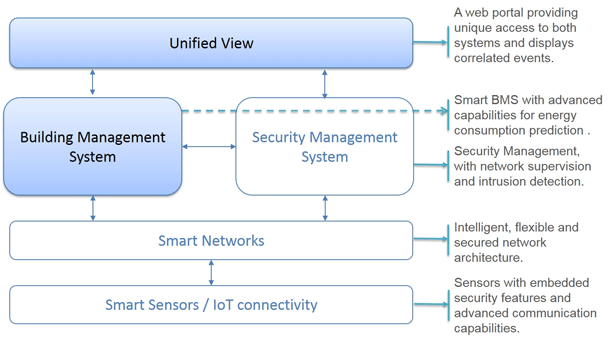
Caption: Figure 1. Unified smart building architecture
Security
Through growing interconnection of energy, facility, information technology and security systems, smart buildings gain in efficiency, flexibility and sustainability. Their exposure to blended cyber-physical attacks also increases.
Smart buildings are increasingly incorporating information from the emerging “Internet of Things.” This includes sensors connected to the BMS via the cloud rather than on local networks. The data coming from these devices adds valuable information but it can be difficult to manage if there is not a unified view of all building information. At risk is the loss of situational awareness, which may reduce the efficiency and create safety risks.
KPIs and Contextual Mobility
Key performance indicators (KPIs) have been developed that synthesize correlated building operations and building security events and measures. The KPIs are synthesized from four domains: energy supply and efficiency; building automation; information and communications technology; and security and safety.
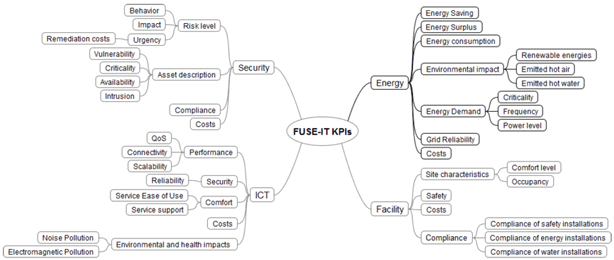
Caption: Figure 2. Facility Using smart Secured Energy & Information Technology (FUSE-IT) Global KPIs
The KPIs allow operations and security managers to have unified access to optimize the energy supply for the building, monitor the physical and cyber security of the building, and monitor the IT infrastructures in order to obtain these two goals simultaneously.
Maximum situational awareness for operations and security personnel is augmented with contextual human machine interface (HMI). Contextual HMI enables personnel managing and maintaining smart buildings to have KPIs and other relevant information and necessary controls at their fingertips. It presents the key performance indicators and real-time building status in the context of the user’s job responsibilities at their current physical location.
Adaptive Demand and Response
Secure and effective forecasting and management of resources is the “smartness” that the architecture relies on to perform holistic building monitoring and optimization. The focus is real-time energy management and day-to-day building management. From the energy point of view, the aim is to ensure that the building is controlled in a way that optimizes a target variable. This may mean decreasing energy consumption or reaching a given level of occupant comfort or a combination of both.
Reaction to a Cyber-physical Attack
From the facility management point of view, the ability to react translates into detecting anomalies or deviations that require a response to mitigate or block. A key element of the architecture is to rely on wider information, since energy and security are considered in combination. This requires monitoring more data, since security-related and energy-related sensing infrastructure are coupled. It enables prediction and reaction relying on common networks and sensors, and on a common database of high-level indicators. This is a major innovation of the project since considering both energy-related and security-related data enables us to reliably build high-level indicators (e.g., the number of people in a room) that are useful for both security monitoring and energy/facility management optimization.
Event Management
A special case exists when the critical facility is used for public events. This includes buildings designed for industrial commercial or public use such as a university campus or intended for temporary events such as sports arenas, concert halls and other cultural events. The variability of energy consumption and security requirements require context-specific management.
The BMS must address the changing operating conditions of the buildings in the context of the smart grid. This implies taking into account potential sources of local energy (e.g., co-generation, renewable energy, energy stored in electric vehicle batteries). Adaptive consumption patterns (using demand side management, demand response, direct load control, load shedding, etc.) are also considered, either inside the building or externally, by means of negotiation and contracts with other stakeholders.
Smart buildings gain efficiency, flexibility and sustainability through the growing interconnection of security systems, energy, facility, and information and communications technology. Their exposure to blended cyber-physical attacks increases as a result.
A comprehensive smart building system architecture addresses this challenge by supporting a building system that is efficient and secure by design. To achieve this, a robust BMS should include advanced capabilities for energy consumption prediction and a unified web portal, providing access to both building management and security management systems.
Key performance indicators synthesize correlated building operations and building security events and measures. Access is provided to operations and security personnel through the unified portal or delivered automatically to their mobile device based on contextual HMI. It enables them to optimize, consolidate and rationalize legacy building management strategies with physical and cybersecurity requirements.
Ed Nugent is COO of PcVue Inc. PcVue Solutions innovates with software that optimizes the interface between people, connected objects and supervisory systems. PcVue Solutions, including ContextVue mobility server and SnapVue mobile apps are a patented innovation for contextual HMI developed by ARC Informatique, the affiliate of PcVue Inc. in Paris.
Next
Read next on FacilitiesNet











